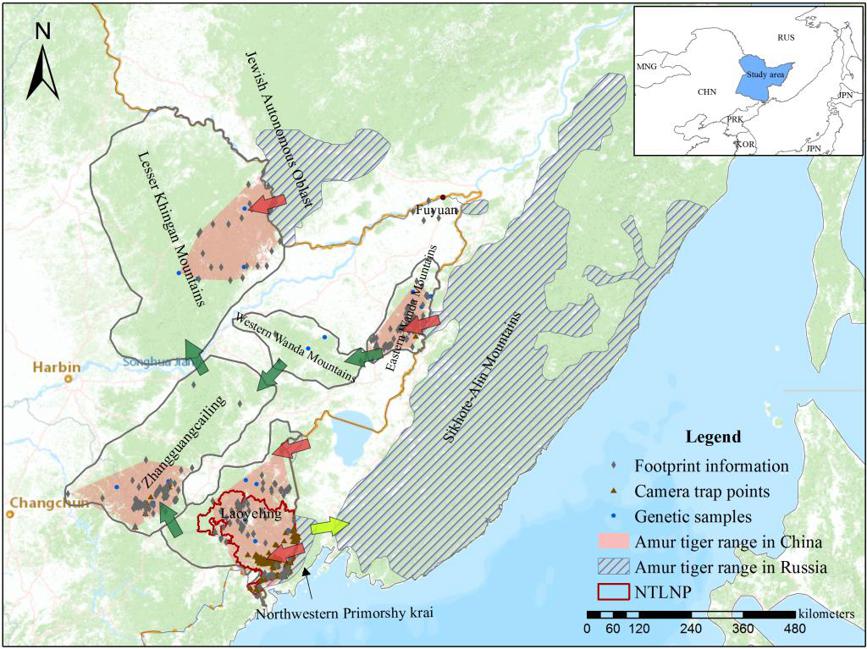Siberian tiger population recovering in NE China


At least 55 wild Siberian tigers were recorded by infrared cameras from the beginning of 2013 to the end of 2018 in Northeast China, where more than 300 tigers can be supported, experts said in a thesis published recently online.
The thesis, which calls for establishing a sustainable population base of Amur tigers in northeastern Asia, was published in Biological Conservation magazine by a team led by Jiang Guangshun, deputy director of the Feline Research Center of the Natural Forestry and Grassland Administration, and experts from the Wildlife Conservation Society, the World Wildlife Fund, the University of California and the Heilongjiang Wildlife Research Institute.
Researchers set up some 2,400 infrared cameras in an area of 47,813 square kilometers covering Laoye Mountain, Zhangguangcai Mountain, Wanda Mountain and the Lesser Khingan Mountains in the provinces of Jilin and Heilongjiang.
They collected images from more than 52.8 million total hours, as well as 146 fecal samples of the tigers and 122 tiger footprints and the tracks of their prey.
After analysis of the data, experts identified 55 Siberian tigers, including 20 cubs.
"The number of adult tigers increased to 33 in 2018 from seven in 2013," Jiang said. "The protection effect is very significant. The increase of tigers is associated with a series of policy changes, such as a decrease in human density due to a relocation project."
Further, he added, the ecology has greatly improved since the natural forest protection project started in 1998. All commercial logging has been halted, which helped to protect tigers.
The successful growth of the tiger population in the areas of Wanda Mountain and the Lesser Khingan Mountains was helped by tiger population recovery in Sikhote-Alin and the Jewish Autonomous Oblasts of Russia, the thesis said.
"Under the current global trend of drastic loss of tiger habitat, China's Siberian tiger population and habitats have great potential to recover. China will become the most promising country in global tiger distribution," Jiang said.
- Pandas headed for Madrid in sign of bilateral friendship
- Niche tourism sector gains healthy advantage in shanghai
- Climate change blamed for heavy rain in the south
- Xi urges building world-class military medical universities
- Ten photos from across China: April 19 - 25
- Shenzhou XVIII astronauts enter space station




































